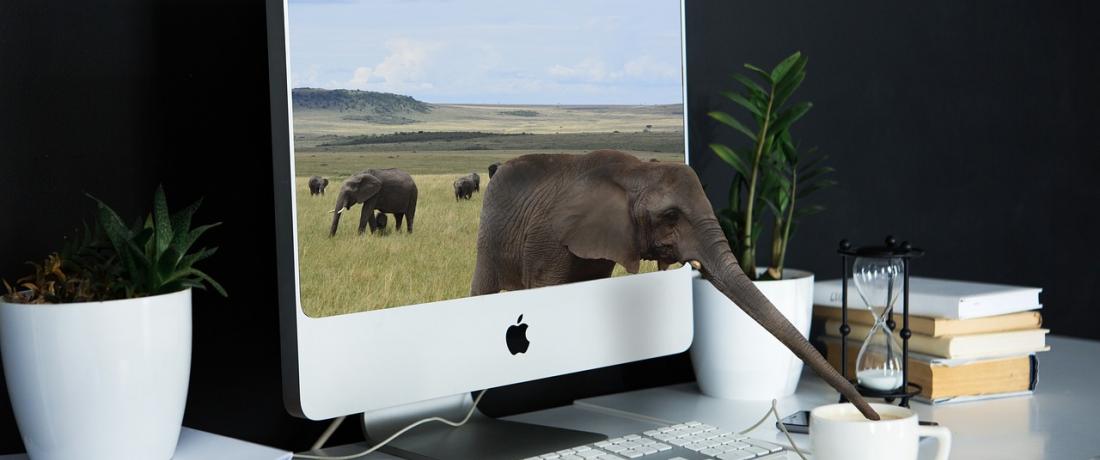
The world is changing so quickly that you’ve got to run for dear life just to stay afloat. The only way to win this race is to follow closely the newest trends.
Read on to discover digital tendencies that might upgrade any business in the nearest future.
Physical + Digital = The New Black
While some experts keep considering offline and online to be separate spheres, users easily shift in between. Customers can search for an item online, and then buy it in the nearest store. Or vice versa. To give an example, youngsters like taking dressing room selfies and ask friends to check the clothing out online.
Actually, the physical world has never been so close to digital reality. Let us take Pokemon Go phenomenon. The virtual game, which made players interact with offline objects, used to earn $1.6 million per day at its zenith.
The key to success was blending digital lore with real-life adventure. That is the very essence of “phygital” approach that has already penetrated into marketing. More and more leading brands are implementing it in order to be two steps ahead their rivals when the whole world turns phygital, which may happen soon.
As a matter of fact, almost every industry is about to begin streamlining man-machine communication with both customers and employees. At this very point companies are exploiting chatbots to offer information on their goods and services, but in a little while the sphere of usage will be expanded to health care, employment, tax rating, and further.
What do chatbots do today? They consult, sell, teach foreign languages - quite impressive, right? Luckily, not all chatbots are workaholics. You can find a couple of TV geeks, e.g. GOTBOT, who knows way more than Jon Snow: Plus, there’s a scotch expert launched by Macallan, a mA bold statement, huh? But if you consider the growth of wearable tech market, it does not seem that baseless. According to Forbes, this industry will be worth $34 billion by 2020. Therefore, in a few years we can expect to see such cool stuff as tappable / scannable in-store installations. Moreover, customers will be able to receive iBeacon offers straight to their watches and smart glasses when entering a shop.
But those are yet to come. What about now? Well, there are lots of initiatives, which prove that phygital is already working. One of them belongs to Lowe’s, a top home improvement retailer in the USA. The company has developed a mobile app that allows clients to measure, design and drop furniture into real house-rooms.
The freedom to experiment encourages customers to make actual purchases, while also strengthening their loyalty to the brand. Profit!
Robot Talk
You’re probably acquainted with Siri, the Apple bot, or Amazon’s Alexa. But did you know that Starbucks, MasterCard and Sephora are using bots, too? Not to mention Facebook, whose chat robots have recently been shut down for inventing their own language.
Plus, there’s a scotch expert launched by Macallan, a major whisky brand. Their chatbot helps customers select a perfect drink and even recommends food pairings. https://www.instagram.com/p/BKbljI6BDJ0/ Future chatbots may become more differentiated and humanized, each having a name, gender, appearance and voice. These qualities are very important, since they influence a brand’s perception, thus each component has to be well weighed and consistent.
To learn more about chatbots and their business potential, click here: Science and technology. Will Artificial Intelligence soon be able to replace us?
In The Mood
Another significant tendency that merges into retail is the aim to preempt emotions, which drive people to buy. Companies now try to predict purchase behaviour basing on subconscious factors.
“Mood retail” is not just about data or tools like Google’s Customer Match for Shopping. Certain brands go further than that by using a customer’s frame of mind as a separate marketing tool.
In 2015, a women’s retailer Finery presented a gamified microsite that matched garments with the user’s mood.
Prospective customers were asked to pick several abstract pictures reflecting their emotional state. The site analyzed those choices to offer the most relevant attire. The idea had proven to be in-demand, as it enabled to bridge the gap between intuitive and rational shopping experience.
A huge step up, regarding the fact that 85-95% of consumer decisions depend on the mood. Surely, brick-and-mortar retailers couldn’t stay aside.
For example, Abercrombie & Fitch, a leading outfit brand, has rethought its retail policy. With lower music, raised lighting and decreased scent, A&F stores are now meant for lingering in.
Eventually, offline retailers will get more instruments for setting the right mood. Heat sensors and facial readers are going to give a mass of extra information: body temperature, expressions, time spent on certain items, etc. Hence, retailers will be able to modify playlists or rotate installations in response to shoppers’ moods, which would make customers feel more comfortable and eager to buy.
To Summarize
As sci-fi as they seem, these trends are about to affect your business, whether you like it or not. Digital has its course, and nobody can jump out of this train. So catch the wave and let it lift you up. Contact us and learn how to adjust yourself to the future. It has already begun.